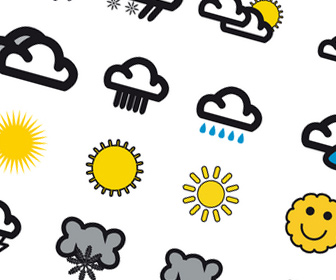5 Fun Games that Teach the Weather


No matter what level of ESL you are teaching, some topics seem to come up in class after class. One of these subjects that you will probably find yourself teaching at one point or another is clothing. Whether it is in a vocabulary lesson or part of a role play, clothing is one of the subject areas that all students can relate to, so the next time you find yourself teaching about shirts, shoes or serapes, give one of these activities a try!

Plan Wisely
To give your clothing unit a practical application, have your students think about what they would pack for a trip to a specific location. Begin the activity by brainstorming with your class the types of clothing they might wear in a cold location, a hot location, or a temperate location. The longer a list your class can generate for each category, the easier it will be for them to do the second part of the activity. Then, if possible, divide your class into groups of three or four and have four different weather reports available for the class to view. Have each group choose one person to take the first turn, and then play the first weather report for the class. The person taking the first turn must then tell his group what he will pack for his vacation to that location. He may choose to use vocabulary the class listed earlier, or he may choose to add his own. Either way, challenge each person to list at least ten items he will take on his vacation based on the weather of the region. Once that person has shared with his group what he will pack, play the second weather report for the next person in the group. She will then list the clothing items she will pack for her trip to that location. Continue until everyone in the group has had a turn.
Descriptive Writing
For a writing activity in a clothing unit, ask each of your students to choose a classmate about whom she will write. Then challenge her to write a description of how that person dresses without using that person’s name. You may choose to let your students chose whom they will write about, or you may want to assign each person in the class to another. Either way, collect the descriptions once they are written. Then use them for a little game of identification. One option is to post all the descriptions on a bulletin board in the classroom, numbered but not identified. Have the members of your class read the descriptions and then guess whom the writer was describing in their piece. Your students should write down their answers and then review them together. Give a prize to anyone with a perfect score. The other option is to read each description to the class and see which of your students can correctly identify the person being written about. You can award points to the first person to guess each description correctly. The prize would then go to the person with the highest score!
Clothing on the Spot
After your students are familiar with the vocabulary associated with clothing, do an on the spot review with this fun activity. Prepare by writing several locations on small slips of paper and putting them into a small bag or hat. You may want to include any or all of the following locations: a baseball game, a wedding, a New Year’s Eve party, a picnic, a public pool, school, work, the grocery store, the prom, a ski resort, the beach and a job interview. Give each of your students a turn to pull a location from the bag. He should start his turn by saying, “I am going to go to….” and then insert the location. He must then tell the class what he is going to wear to that location. For example, one person might say, “I am going to go to a job interview. I will wear a shirt, tie and jacket. I will also carry a briefcase.” If a student is stuck on his turn, allow other members of the class to offer suggestions. Students can be as creative or as serious as they like, but have the class act as judge for any answers that may be too silly to be practical!
No Shirt, No Shoes, No Service
Businesses and restaurants sometimes have restrictions on the clothing you must wear while in the establishment. Some upscale restaurants require men to wear a jacket and tie. Other locations will refuse to serve someone who is not wearing shoes. Your class may have some interesting thoughts to contribute to a discussion on whether these restrictions are fair. Start by asking your class why some businesses might refuse to wait on customers who are not dressed appropriately. Once your students have shared some thoughts, challenge them to think of some circumstances where this preclusion might be appropriate and some other where it might be inappropriate. Allow individuals to share a personal experience when they were required to dress in a certain manner in order to get service at a store or restaurant. After the discussion, you can ask your students to make a list of the dress requirements they would establish if they were to own a store or restaurant.
The next time you teach a clothing unit, try one of these activities for a new perspective on old duds.